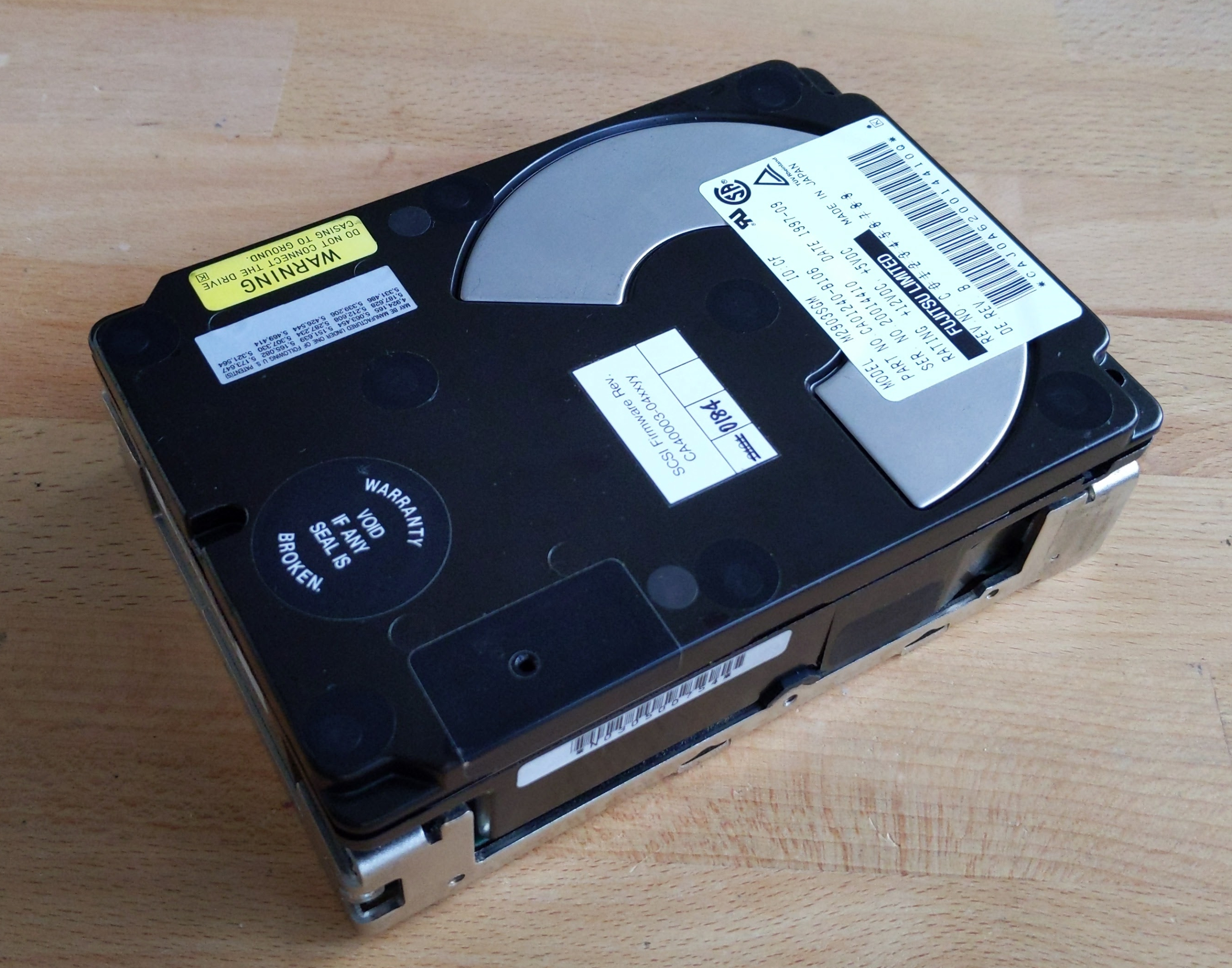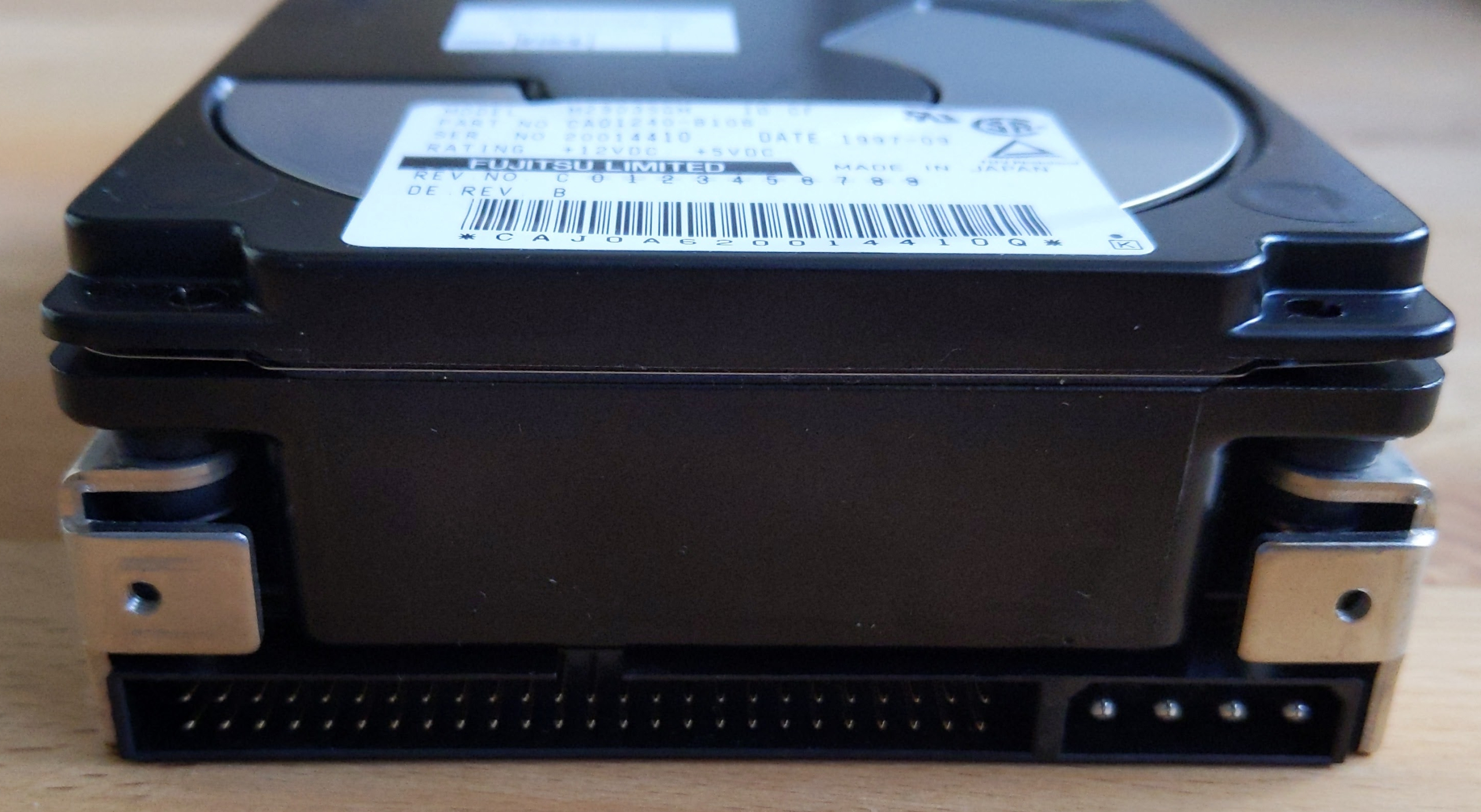The Fujitsu M2903SGM was one of Fujitsu’s many SCSI offerings available in 1997, offering what the company refered to as a “high capacity specialty” drive. Over 25 years later, this monstrosity of a brick continues to function well, with this particular example being NOS.
Few enterprise models survive so many years later, but looking into what was one of Fujitsu’s highest end offerings is a fascinating event.

Drive Attributes ------------------------------------- Fujitsu M2903SGM ------------------------------------- Capacity 2.2GB Mfc Date 1997-09 Format 3.5" (full/HH) Interface SCSI (50-pin) Platters 7 Heads 13 Cache TBD RPM 5400 Origin Japan (FCL) -------------------------------------


The few labels on the drive provide reasonable information, although lack some key features (namely, capacity & spindle speed). Clearly, this drive was produced in Japan, being the only production hub for this model, a factory later relegated to pre-release & sample units in the mid-2000’s.



Taking a look at the rear, the PCB is quite packed, which is something to expect with this level of SCSI implementation. Generally, it’s quite a clean looking drive, aside from the few blue wires traced across the backside of the board.

Removing the PCB, we get a look at the underside. A touch more digging is required to view the spindle motor vendor…

As commonly seen, it’s a Nidec, pushing all 7 platters up to 5,400 RPM.

The PCB contains a lot of logic, as mentioned above. A couple notable chips include a huge microcontroller IC from Texas Instruments and a SCSI interface controller from QLogic.
While the blue wires may look a little sloppy, almost as if they were a major afterthought, they do their job just fine. It’s worth being delicate with this model though, of course.

The rear of the PCB offers a few things of note too, particularly the two 16-bit RAM chips from Toshiba (seemingly, 90ns parts). The head-stack connector is rather large.
There’s little more to say about such a rare specimen of a drive, with few results being available online. It performs per expectations, although isn’t the top of its class by any means. Fujitsu’s full swing enterprise business was starting to sprint at this point in time, with much success to follow in the early 2000’s.
One thing can be said for sure, it certainly sounds quite interesting in operation.
Feel free to listen to this drive here (also available with visuals on the video below):
If you missed the video I made on this drive, you can find it here: